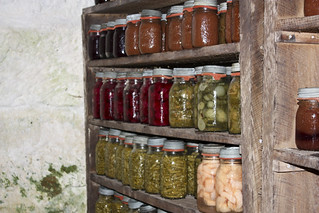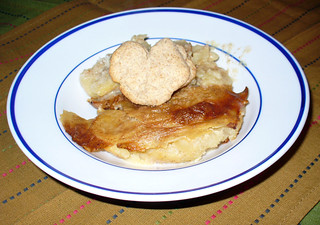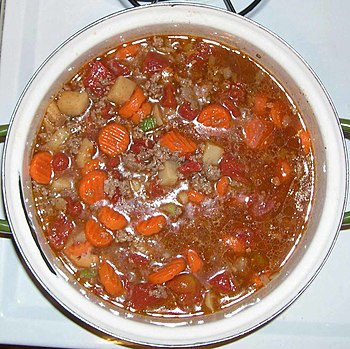The Pennsic War is unique in the SCA. To my knowledge it is the only two week long war that is scheduled every year. While there are plenty of food merchants at this event, if you want to eat your own food for the entire time, it is definitely possible, it just takes a bit more planning.
So how do you camp for more extended periods of time? Well, we use a combination of the tactics that we have already discussed and a few other handy tricks. The first trick, which we sometimes use even for week long events, is to freeze gallon jugs of drinking water in the deep freeze. You must purchase drinking water in plastic bottles with screw tops. The pop-off tops will fall off from the pressure of the ice when the water freezes.
We use two or three of these frozen gallon containers in the bottom of a five day cooler. This cooler is dedicated completely to zero degree frozen food. The food is packed into the cooler, the top is shut tightly and a blanket or quilt is used to increase the insulation factor. We are extra careful to keep this cooler away from the wall of the tent, especially if that wall gets sun. The more stable that you can keep the temperature, the better. This arrangement will usually keep the food in the cooler completely frozen for four to six days, especially if you have frozen the food in blocks. When the gallons of water are finally melted they become an excellent source of safe cold water for drinking.
So, you can rely on fresh food for two to four days, then frozen meals for 2 to four days, and then? Well, there are some “fresh” foods which are just plain less susceptible to spoilage than others, for instance, carrots and ham. A ham steak, with canned yams and biscuits makes a lovely dinner. As long as you keep the ham on ice it will keep for weeks. I usually carry water proof boxes of flour, and brown sugar with me. Canned yams + brown sugar + butter + frying pan = candied yams. Yum! Carrots will keep for weeks if you keep them from drying out. Boil them and serve with a little butter, or candy them. Delicious and nutritious either way. Oh, and you can even buy canned ham – that is good for years. Which brings me to another topic – canning.
Obviously you can always resort to commercially canned food (commercially prepared dehydrated food, too). Almost anything that you can think of comes in a can – soup, stew, hot dogs and beans, meat, fish… But, yes, we can our own food to take camping – beef roast in broth is just as good canned as fresh. We have even experimented with canned soup concentrates, sauerkraut, pickled vegetables, cookies and cake, all of which were yummy.
Our goal when we camp is to have safe, delicious food that takes a minimum amount of preparation. As merchants our schedule is often dictated by the presence of customers, but good food is still important to our health and general well-being.
Next Time: Eating Well When You Camp – Canning a Cake






